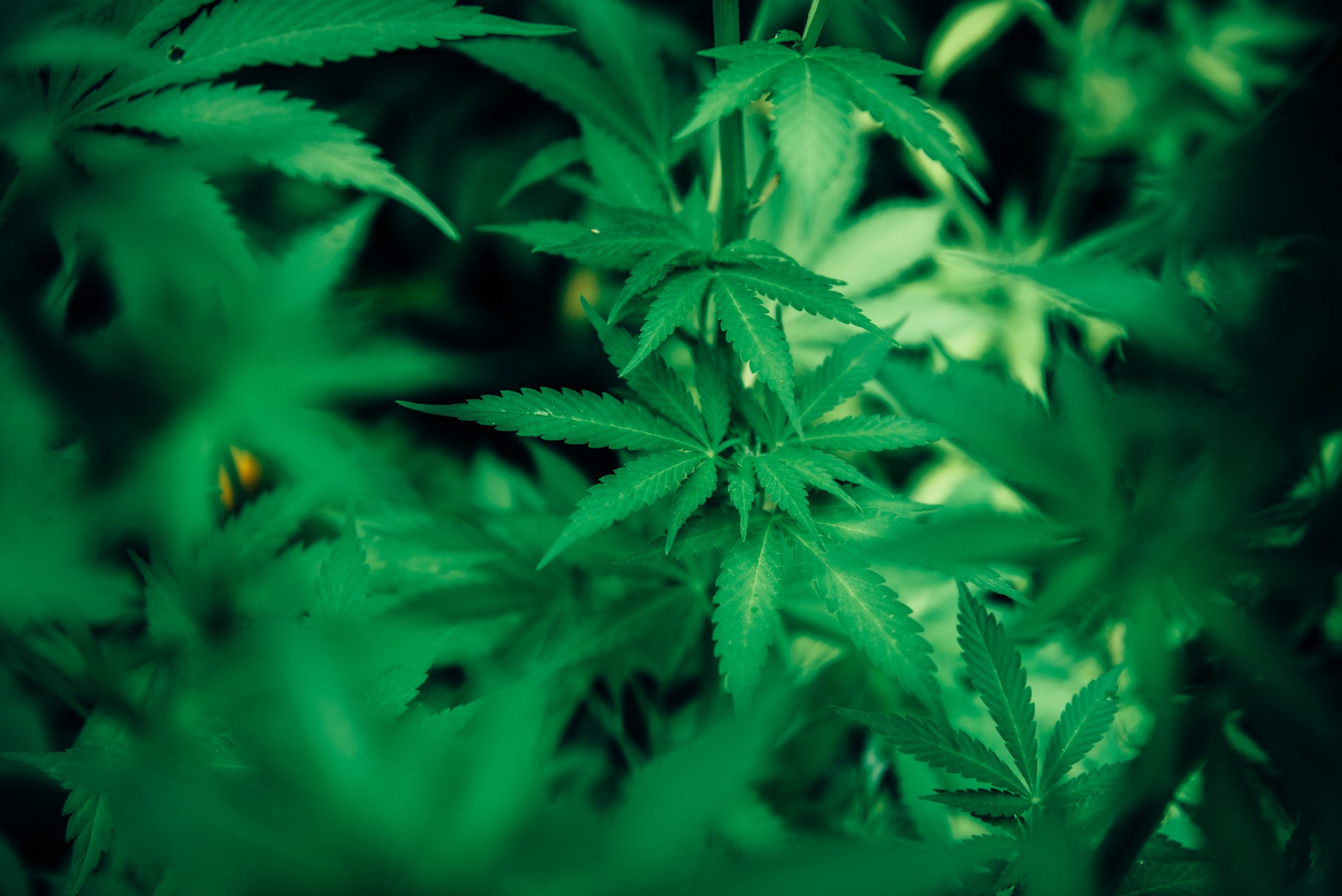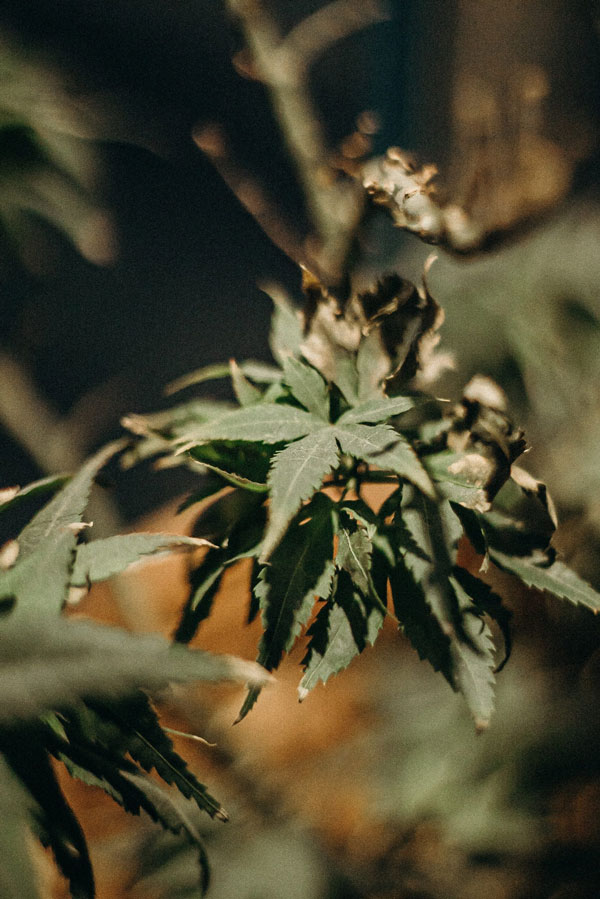Cloning cannabis is a popular and effective method for propagating plants, allowing growers to produce genetically identical copies of their favorite strains. This post will look into the remarkable realm of cloning cannabis, examining its advantages and disadvantages while offering helpful advice on replicating your own plants.
We’ll discuss the pros and cons of cloning cannabis plants, ensuring you have a comprehensive understanding of whether this technique is right for your growing needs. Next, we’ll guide you through the process of cloning step by step so that even beginners can confidently replicate their prized mother plant.
Additionally, our expert tips on best practices for cloning will help both novice and experienced growers optimize their success rates. Finally, we’ll outline essential tools required for successful cannabis cloning that every grower should have in their arsenal. By the end of this informative post, you will be well-equipped with all the knowledge necessary to master the art of cloning cannabis.
What is Cloning Cannabis?
Cloning cannabis refers to the process of creating genetically identical copies of a mother plant, ensuring that each new plant grown will have the same characteristics as its parent. This method has become increasingly popular among both home growers and commercial growers, as it allows for consistent quality and predictable results in every harvest.
The process involves taking cuttings from a healthy mother plant and providing them with optimal conditions to develop roots and grow into mature plants themselves. By cloning cannabis plants, you can preserve your favorite strains’ genetics without having to rely on seeds or purchasing new plants regularly.
Why Clone Cannabis Plants?
- Maintain Consistency: Cloned plants inherit their mother’s genetic traits, allowing you to produce crops with consistent potency, flavor profiles, growth patterns, and yields.
- Faster Growth: Since clones are already partially developed when they’re taken from the mother plant, they typically reach maturity faster than seed-grown counterparts.
Cut Costs: Rather than buying seeds or new plants every season, cloning allows you to create an endless supply of your preferred strains at no additional cost beyond initial setup expenses.
Selecting a Mother Plant for Cloning
To successfully clone cannabis plants (grown from either seeds or previous clones), it’s crucial first to choose an ideal mother plant. A high-quality mother should exhibit several desirable attributes, such as robust health (free from pests/diseases), vigorous growth rates, and desirable traits (potency, aroma, etc.). Once you’ve identified a potential mother plant, it is important to maintain its health and provide ideal conditions for successful cloning.

Timing is Key
The best time to take cuttings from your mother plant is during the vegetative stage, when plants are actively growing but have not yet begun flowering. This ensures that the clone will focus on root development rather than trying to produce flowers or seeds right away. It’s also important to avoid taking cuttings too early in a plant’s life cycle; waiting until it has reached at least two months of age allows for more established growth patterns and better overall results.
Cloning cannabis is a process that can be used to create identical copies of existing plants, allowing growers to produce larger yields with greater consistency. Though it can be beneficial to clone cannabis, one must weigh the advantages and disadvantages before trying this form of cultivation.
Pros and Cons of Cloning Cannabis Plants
Cloning cannabis plants is a popular method among both hobbyists and commercial growers. This technique involves taking cuttings from a healthy mother plant to create genetically identical copies, which can then be grown into new plants. Before deciding if cloning cannabis is the right choice for you, it’s important to consider its advantages and disadvantages.
Advantages of Cloning Cannabis
- Genetic consistency: Since clones are exact genetic replicas of the mother plant, they will exhibit the same traits, such as growth patterns, cannabinoid profiles, flavor, and aroma. This allows growers to maintain consistent quality in their crops.
- Faster growth: Compared to starting from seeds, cloned plants have a head start on development because they already possess established root systems. This means they can grow more quickly once transplanted into the soil or another growing medium.
- Saves time and resources: By using clones instead of seeds, growers can bypass the germination process altogether. Additionally, since all clones come from one mother plant with known characteristics like sex (female), there’s no need to spend time identifying male plants that could potentially harm your crop by pollinating females.
- Ideal for commercial operations: For large-scale cultivation facilities where uniformity across multiple harvests is essential, cloning cannabis offers an efficient way to produce high-quality crops consistently over time without having to rely on seed stock availability or variability in genetics due to crossbreeding.
Disadvantages of Cloning Cannabis
- Reduced genetic diversity: Cloning cannabis plants can lead to a lack of genetic variation, which may make the crop more susceptible to pests and diseases. This is because clones share the same vulnerabilities as their mother plant.
- Potential for disease transmission: If the mother plant has any diseases or pests, these issues can be passed on to its clones. It’s essential that only healthy mother plants are used for cloning purposes.
Limited lifespan: While some growers maintain a single mother plant for years, it will eventually decline in health and productivity due to age. As a result, new mothers must be selected periodically from among your existing plants grown through cloning or seed germination.
How to Clone Cannabis Plants
This process involves taking cuttings from a healthy mother plant, which are then rooted and grown into new, genetically identical plants. Follow these steps to successfully clone your cannabis plants:
- Selecting the Mother Plant: Choose a healthy, vigorous mother plant that has been in the vegetative stage for at least two months. Ensure it is free of pests and diseases.
- Cutting Selection: Look for branches with multiple nodes (the points where leaves emerge), as they have more potential for root development. Cuttings should be around 4-6 inches long, taken just below a node using clean, sharp scissors or pruning shears.
- Treating the Cutting: To encourage rooting, dip the freshly cut end of each cutting into the rooting hormone. Alternatively, you can use cloning gel, which also helps prevent infections.
- Planting the Cutting: Place treated cuttings into small pots filled with a moistened growing medium such as coco coir or rock wool cubes. Make sure not to overcrowd them,
- so they have enough space to grow roots.
- Maintaining Optimal Conditions: Ensure proper humidity (70-80%), temperature (72-78°F), and light conditions (18 hours on, 6 hours off) for your cuttings. Use a humidity dome or mist them regularly to maintain moisture levels.
- Monitoring Root Development: After about one week, gently tug on the cuttings to check for resistance – this indicates that roots are forming. It may take around three weeks for the roots to completely develop and become visible.
Transplanting: Once you see healthy root development, it’s time to transplant your clones into larger pots with nutrient-rich soil. Continue providing proper care as they grow into mature plants grown from clones.
By following these steps, you can successfully clone cannabis plants and enjoy consistent yields of your favorite strains. Cloning cannabis is a popular technique used by both hobbyists and commercial growers. Remember that practice makes perfect, so don’t be discouraged if some of your first attempts at cloning aren’t successful. With patience and attention to detail, you’ll soon master the art of cannabis cloning.
Cloning cannabis plants can be an effective means of increasing the number of flourishing specimens you can cultivate. With best practices in mind, it’s possible to successfully clone your favorite strains and maximize their potential for growth.
Best Practices for Cloning Cannabis Plants
In order to successfully clone cannabis plants, it is essential to follow certain best practices. These practices will help ensure that your clones grow strong and healthy, ultimately producing high-quality yields.
Select a Healthy Mother Plant
The first step in cloning cannabis plants is selecting a healthy mother plant. This plant should be free of pests and diseases, as these can easily transfer to the clones. Additionally, choose a mother plant with desirable traits such as high yield or specific cannabinoid content.
Take Clean Cuttings
When taking cuttings from the mother plant, make sure to use clean and sterilized tools. This helps prevent the spread of pathogens between plants. A sharp pair of scissors or pruning shears are ideal for making clean cuts at a 45-degree angle on branches with multiple nodes.

Maintain Proper Humidity and Temperature Levels
- Humidity: High humidity levels (70-80%) are crucial during the initial stages of cloning since this encourages root development. You can maintain proper humidity by using a humidity dome.
- Temperature: Ideal temperature range for cloning cannabis plants is between 72°F – 78°F (22°C – 25°C). Too hot or too cold temperatures can hinder root growth or cause stress on the young clones.
Aerate Rooting Mediums Regularly
To promote optimal root growth in your clones, aerate their rooting mediums regularly by gently poking holes with a sterilized tool. This helps provide oxygen to the roots and encourages healthy growth.
Use Rooting Hormones or Cloning Gels
Rooting hormones and cloning gels can significantly improve your success rate when cloning cannabis plants. These products contain essential nutrients that stimulate root development, helping clones establish themselves more quickly.
Monitor Clone Progress
Regularly check on your clones to ensure they are growing well and showing signs of rooting. Remove any dead leaves or unhealthy-looking cuttings from the batch to prevent potential issues from spreading.
By following these best practices for cloning cannabis plants, you increase the likelihood of successful propagation, leading to robust and productive plants in your garden. These tips are especially important for commercial growers who rely on consistent yields and quality.
Cloning cannabis plants can be a challenging but rewarding process. With the right knowledge and tools, you can ensure success in cloning your own cannabis plants. Essential Tools for Cloning Cannabis Plants is the next step to ensuring successful clones every time.
Essential Tools for Cloning Cannabis Plants
Cloning cannabis plants requires specific tools and conditions to ensure successful growth and development. In this section, we will discuss the essential tools needed for cloning cannabis plants, such as rooting hormones, cloning gel, humidity control, and temperature regulation.
Rooting Hormone
Rooting hormones, also known as auxins, are essential in promoting root growth in cuttings. They help stimulate cell division at the base of the cutting and encourage rapid root formation. Rooting hormones come in various forms like powder, liquid, or gel; each has its advantages depending on your preference.
Cloning Gel
A cloning gel is a viscous substance that contains rooting hormones along with other nutrients beneficial to plant growth. It helps seal the cut end of the cutting while providing the necessary nutrients for root development. To use cloning gel effectively, dip your freshly-cut stem into it before placing it into your chosen growing medium.
Humidity Control
Maintaining high humidity levels is crucial for successful cannabis cloning. High humidity helps prevent the cuttings from losing too much water through transpiration, ensuring they don’t wilt or die before developing roots. A humidity dome can be used to create a controlled environment with optimal moisture levels.
Tips for maintaining proper humidity:
- Mist your cuttings and the inside of the dome regularly.
- Use a hygrometer to monitor humidity levels within the dome.
- Ventilate your dome occasionally to prevent mold growth and maintain fresh air circulation.
Temperature Regulation
For optimal metabolic processes and root development, maintain a temperature range of 72-78°F (22-25°C) for your clones. Maintaining this temperature range ensures that metabolic processes occur at an optimal rate, promoting root development in your clones. You can use a heat mat under your propagation tray or adjust room temperatures accordingly to achieve these conditions.
In summary, using rooting hormones, cloning gel, controlling humidity levels, and regulating temperature are essential tools and practices needed when cloning cannabis plants. By following these guidelines and investing in quality equipment, you increase the chances of producing healthy clones ready for transplanting into their final growing medium.
FAQs in Relation to Clone Cannabis
Are there any issues with cloning cannabis?
The main issues with cloning cannabis include potential genetic degradation, susceptibility to pests and diseases, and ethical concerns. Cloning may result in weaker plants over time due to accumulated mutations or reduced genetic diversity. Additionally, clones are more vulnerable to pests and diseases as they share identical genetics.
What is the purpose of cloning cannabis?
The primary purpose of cloning cannabis is to preserve desirable traits from a specific plant for future cultivation. This process allows growers to maintain consistent quality, potency, yield, and other characteristics across multiple generations without relying on seeds or breeding new strains.
What are the basics of cloning cannabis?
To clone a cannabis plant, start by selecting a healthy mother plant with desired traits. Cut a branch at an angle below its node (where leaves attach), then remove lower leaves before placing it into a rooting medium like rock wool cubes or water. Provide adequate humidity levels and light intensity while monitoring root development until transplanting into the soil or hydroponic systems.
Is cloning cannabis difficult?
No, cloning cannabis is not difficult if you follow proper techniques and provide suitable conditions for growth. With practice and attention to detail, such as maintaining cleanliness in your workspace and ensuring optimal environmental factors like temperature and humidity levels, successful clones can be achieved consistently.
Conclusion
By following our best practices, you can ensure that your clones are healthy and strong enough to grow into mature plants. Whether you’re a commercial grower or just looking to expand your personal garden, cloning cannabis is an excellent way to produce high-quality buds.
If you are a cannabis grower and want to take your extracts to the next level, then you need to check out our automated extraction-to-distillation system, which completely eliminates winterization and cuts your labor in half! Our team of experts would love to answer your questions. If you are interested, call us at 651.600.0036 or fill out the form below so we can get a conversation started.
Get in touch with our team to request a quote, learn more about our facility design services, or get help with your business plan.
We are dedicated to providing you with the best advice, quality, and service in the industry.



